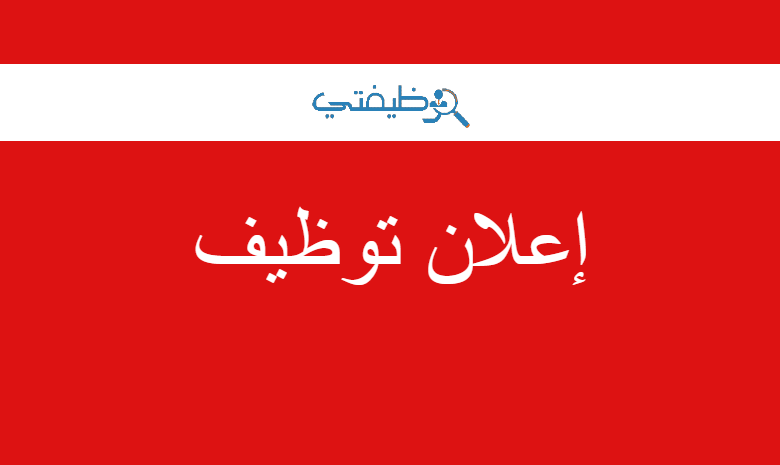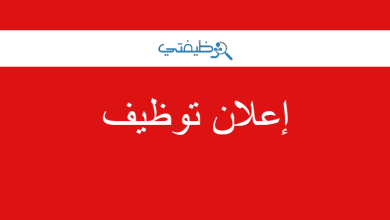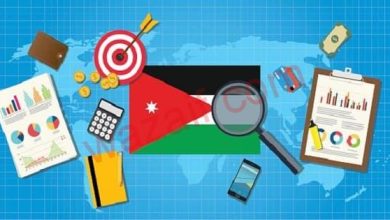STTA – Exploring and assessing opportunities for Recycling of the Textile Waste

STTA – Exploring and assessing opportunities for Recycling of the Textile Waste
SCOPE OF WORK (SOW)
SOW Title: Exploring and assessing opportunities for recycling of the textile waste in Jordan
Activity Name:
1.1 Improve Business Performance and Profitability for Private Sector Companies in the Recycling Sector
1.1.1 Improve Businesses Capacity (managerial, technical, and access to information)
1.1.1.3 Technical Assistance and upgrade
Period of Performance: Dec 15, 2022, to Feb 10, 2023
Level of Effort: Up to 20 working days
Consultant’s Name: Local STTA
- BACKGROUNDND
The Recycling in Jordan Activity is a multi-year Activity funded by the United States Agency for International Development (USAID). The Activity is partnering with the Ministry of Environment (MOENV), the Greater Amman Municipality (GAM), and private-sector recycling companies to increase the commercial sector’s utilization of recycling services in Amman. Through a market-based approach, the USAID Recycling in Jordan Activity seeks to improve and expand private-sector recycling markets, increase demand for and utilization of recycling services within Amman’s commercial sector, and improve the business enabling environment for recycling services and material markets. As the recycling sector becomes more competitive, the activity will capitalize on opportunities to boost the commercial sector’s demand for recycling services.
The Activity conducted a market system analysis (MSA) study for the recycling sector in Amman, which identified insufficient suppliers of recycling services, the majority of which lack the required business skills and capacities to deliver a quality ‘waste solution’ to large commercial waste generators. Most of the existing service providers lack managerial and technical capacities and access to information, which limits the extent and coverage of their services and hinders their ability to meet market demands. The MSA study also identified the relevant stakeholders and mapped their functions and roles. The study included a value chain mapping exercise for prioritized waste sectors and market products in terms of value, volume, and inclusion, which are metals (ferrous and non-ferrous), plastics, paper and cardboard, and organic. However, the prioritization process does not include non-municipal waste sectors that could have a leverage potential such as textile waste.
The Activity decided to move forward across the value chains in the local market and explore new sectors that increase the value of the private recycling sector, increase the volume of waste diverted from landfill to the recycling sector; and have inclusive patterns of growth that offer improved opportunities for women, youth and marginalized groups.
Textile waste is recognized as one of these new waste sectors to be explored as the current situation indicates around 60 – 80 tonnes per day are being diverted to the landfill. The prioritization criteria shall tackle the relevance (Waste Volume – size and significance? Jobs – number and type?), opportunity (growing output and profits, markets and market access, Job quality (health and safety related) – safe or unsafe) and feasibility (alignment with policies and strategies, skills available – team and modes, scope, partners/leverage potential – number and type).
The Activity aims to identify potential business opportunities that could fill these market gaps and help facilitate the introduction of market-based solutions and technologies that are applicable to the local context.
In Jordan, the mass production of Ready-Made Garments (RMG) in the industrial zones results in considerable amounts of textile waste that end up in landfills. As commonly practiced, garments that do not meet the customers' quality standards as well as excess garment products that were not accepted or sold are thrown away. This textile waste has been treated as a cost factor harming Jordan’s fragile ecosystem. However, textile waste also does involve numerous opportunities and could be recognized as a valuable resource on local, regional, and international level on a long term.
Textile waste is defined as a by-product of the RMG sector in Jordan and most of the manufacturers are concentrated in the extreme north of the country specifically within the boundary of industrial estates mainly Al-Hassan Industrial Estate (HIE). According to GIZ’s recent study, 26 textile and RMG manufacturers imports on average 144 ton/day of packaged fabrics (input materials) out of which 76% of input material is transformed into RMG, while about 24% counts as textile, plastic, and paper waste for a total waste generation of 34 ton/day. This means, around one-fourth of the input material becomes waste after the manufacturing process is finalized, which is considered an acceptable range when compared to the RMG sector standards. The total textile waste generated at HIE amounts to about 30 tons/day and mostly ends up at Al-Akaider Landfill.
The ultimate goal beyond this assignment is to introduce viable market solutions for recycling textiles through facilitating business-to-business partnerships between the RMG manufacturers at HIE (as waste generators) and textile waste processors/recyclers whether exist locally in Jordan or globally, who can provide value-added activities and produce new products from recycled textiles. Besides, the economically viable operation that could be resulted from this partnership may also contributes to achieving substantial environmental and social benefits.
The business partnerships that handle textile waste could be approached from different perspectives, models and options including but not limited to circularity options, industrial symbiosis, selling on certified waste exchange platforms (e.g., reverse resources platform), fiber-to-fiber yarn production, mechanical recycling, chemical recycling, etc.…
- RATIONALE
Nature and variety of raw materials play a vital role in the textile industry and significantly affect product costs based on its type, processing, and end-use. It is impossible to process any textile raw material without producing waste. Consequently, figuring out the composition of textile waste that comes out of processing is of great importance in all modern systems of controlling production and valorization of the wasted materials.
In Jordan, the current situation shows that recycling of textile waste is limited with low value-added activities and most of the waste volumes end up in landfill. Currently, natural fabric wastes (e.g., cotton, wool, etc.…) are being generated in low amounts where local recyclers/processors collected for producing hollow fibers (as a filler material) for export destinations (mainly Saudi Arabia) which it is used there for producing traditional Bedouin furniture, while small amounts are being utilized in by domestic furniture manufacturers. Moreover, special types of natural fiber waste are being utilized by local felt manufacturers for producing mattresses and several other applications, including but not limited to, thermal insulation and sound-dampening panels.
Besides that, synthetic fabric wastes such as polyester (the largest portion of the textile waste composition in Jordan) are being partially recovered by local recyclers/processors through mixing with natural fabrics materials to produce fine fluff material that is used by furniture manufacturers as a filling material. Some of those recyclers are stockpiling large volumes of textile waste and waiting for potential local or global utilization opportunities.
The relevant studiindicatetes that textile waste in Jordan consisted of polyester, fleece, and other non-woven synthetic fabrics, where synthetic polyester and fleece are the major components, which unfortunately does not have a sustainable market channel for recycling and thus most of these volumes end up in the landfill.
In respect of the regional and international markets, Jordan lacks the real proportional advantage that would make its textile recycling industry globally more attractive and competitive. For example, the lack of natural input materials (unliin ke Egypt) made it hard to make the textile recycling industry vertically integrated. At the same time, the lack of export tax incentives on recycled textile products (unlike Turkey) limits the competitiveness of the Jordanian textile recycling industries in the regional markets. Not to mention the strong competition from China and Far-East Countries which enjoys lower production costs (i.e., energy, labor, etc.), more resource, and more substantial access to external markets.
Considering that, the potential to valorize commingled pre-consumer textile waste shall be explored and clearly defined, this includes but is not limited to, expanding the local textile processing capacity to produce recycled hollow fibers for direct use in furniture manufacturers or nonwoven fabrics for or production of recycled felt insulation pads. Such investigation could be essential for the whole textile recycling sector to expand, grow, reach, and compete in the regional markets taking into consideration that the global market for Non-woven Fabrics is estimated at US$27.2 Billion in the year 2020 and is projected to reach a revised size of US$41.7 Billion by 2027.
Nonwoven fabric and felt materials have a wide variety of applications starting from building materials, for thermal and acoustic insulation with higher benefits for the environment helping also in the reduction of the energy required for heating and cooling of buildings, to wider applications in automobile industries and pollution containment. According to literature data, the production of nonwoven materials from textile waste requires fewer steps than yarn production, leading to a lower cost of the resultant new materials and a reduction of the environmental impact.
- OBJECTIVES
The USAID Recycling in Jordan Activity is seeking to assign a consultant to assess the market and business opportunities for recycling of textile waste that is being generated by the RMG sector in Jordan, with a focus on the HIE. This assignment is intended to be a baseline assessment that will provide data and inputs on the current practices, sources/streams, volumes, value, type and composition, linkages, functions across the value chains, vertical and horizontal relationships, market channels, and destinations, inclusion, technology, and business modality of implementation.
The objective of this assignment is to perform a technical evaluation of the textile waste sources, streams, types, and fibers classifications that are being generated from the RMG sector in Jordan with a special focus at HIE, and based on the findings, evaluate possibilities for establishing partnerships between RMG manufacturers (waste generators) and local recyclers/processors for producing hollow fibers and nonwoven applications whether based in Jordan or globally. Facilitating partnerships with such innovative textile recycling and valorization model will lead improving the performance and profitability of the Jordanian textile recycling sector and increasing the volume of materials diverted from the private-sector-led sector-led recycling service providers.
The specific objectives of this consultancy assignment are to deliver a detailed investigation and clear definition of the key challenges that need to be addressed to leverage sustainable and viable business linkages between the relevant private textile recyclers/processers and the waste generators from the RMG sector in Jordan, with attention to the following areas:
- Pre-collection: to what extent do the RMG manufacturers: Adopt such procedures for the separation at source along the production cycle, which is a fundamental step for building a business case, with a focus on the main generation points? The criterion of separating the waste shall be line with the market requirements to generate incentives and benefits.
- Transport: selecting the appropriate modeling for transporting the textile waste from the generation to its final destination of recycling instead of landfilling plays a role in having reasonable costs and a win-win agreement.
- Sorting: The sorting and separation of the different fiber types from each other and from impurities such as zippers, buttons, etc.
- Sourcing: Lack of systematic supplies, efficient sourcing, and planning of waste textiles for the recycling recyclers.
- Heterogeneity of the waste textiles: Heterogeneity of the waste material in terms of different histories of each fabric, presence of dyes, finishes, and other chemicals in the material which make the full recycling if not impossible, highly demanding, adding more steps to the process and affect the final properties of the final product.
- Downcycling: The quality of the reproduced material will be lower than its equal product made by virgin raw material, therefore if not used as low-quality product it often needs to be mixed with some virgin material to be able to make a final product acceptable in the market.
- Geographical difference of manufacturing and consumer market: The regional legislations and tax directives, compliance with national/international environmental legislation, and how they steer the market competitiveness.
- COMPOSITION OF TEXTILE WASTE
Currently, there is no clear data about the fabric composition of the textile waste generated by the Jordanian RMG manufacturers, to this end, the data obtained from the customs office at HIE indicated that the main textile material imported to HIE includes woven polyester and other synthetic fleece fabrics, knitted cotton fabrics, and other knitted or crocheted fabrics.
The initial observations indicated that most of the wasted textile fabrics at HIE include synthetic polymers (i.e., polyester, spandex, nylon) and natural polymers (i.e., rayon (viscose)). Such low-quality low-valuer low-value textile waste predominantly consists of synthetic polymers (i.e., mainly fleece). Which could not be used directly in the RMG industry, but it could have a high potential in the manufacturing of nonwoven fabrics or recycled hollow fibers as furniture filler materials. These are quite promising materials in the current used market. Use of recovered synthetic fibrous waste is particularly attractive as the processing characteristics of properly recovered synthetic do not differ much from those of original synthetic staples and cut filaments.
4.1 TARGETED GROUPS
USAID Recycling in Jordan Activity envisions delivering this consultancy to target the following groups:
- Service providers: this assignment will specifically target the local market recyclers/processors in hollow fibers/nonwoven fabric manufacturing and will consider hollow fibers/nonwoven textile manufacturers and suppliers across the textile waste value chain. This also includes any other locally/globally available upcycling (value-adding) processors/manufacturers to produce new products from textile waste.
- Waste Generators: this assignment will specifically target the local market leaders in the textile and RMG sector and will specifically target 26 textile and RMG manufacturers at HIE, or any other locally available producers for pre-consumer textile waste.
- DETAILED RESPONSIBILITIES
The Consultant would be required to use his knowledge, professional experience, and qualifications as required to perform the following tasks:
Task 1: Introductory meetings with selected local textile recyclers/processors and RMG manufacturers at HIE
In this task, the consultant shall conduct sperate one-to-one meetings with several RMG manufacturers to confirm volumes, types and composition of textile waste they are being generated, the consultant shall also meet with selected local textile recyclers/processors including recycled nonwoven manufactures and recycled hollow fibers manufactures to understand their material needs/requirements and to develop a detailed understanding about capacities, potential growth, and available technological know-how on producing nonwoven fabrics from commingled textile waste, or any other locally available upcycling (value adding) processors/manufacturers to produce new products form textile waste. The Activity will provide the consultant with a list of selected RMG manufacturers and local recyclers/processors to be targeted under this Task.
The consultant will be responsible for designing and preparing the best data collection tools to be used in this assignment (e.g., questionnaire, key informant interview, etc…), in close coordination with the respective team in the Activity.
Task 2: Perform a rapid research study about the current situation of textile waste at HIE, the local textile recyclers/processors in Jordan, and the regional markets for recycled textile products
Based on the findings of the Task 1, the Consultant shall perform a rapid desk research study (10 -15 pages maximum) to clearly define the following elements:
- Volumes and types of textile waste and fabric materials; the definition of textile waste shall be in line with the textile recyclers' needs, international best practices, and market requirements.
- A short description of the existing legal and regulatory frameworks of the textile waste in Jordan and defining the relevant limitations and constraints if any.
- Current sorting practices and the potential for planning the production of textile waste (i.e., production schedules), the desk research shall include any existing measures for facilitating more efficient supplies of the textile waste aiming at streamlining the production of end-products that meet the market demand.
- Current practices for utilization of the textile waste, cost of the material anchored by the local textile recyclers, and any subsidies provided by textile waste producers or the local authorities, the desk research shall clearly define how the cost of the materials affects the market competition of the Jordanian textile waste end-products in the local and regional markets and what are the proposed technical and financial measures to strengthening the local and regional competitiveness.
- The heterogeneity of the textile waste and its implications on the potential utilization opportunities, the desk research shall include identifying potential end-products that could be produced from the textile waste and its applicability to the current technologies/processing capacity of the local textile recyclers and regional markets demand.
- The context global and regional competition in the textile recycling market, the desk research shall define all external constraints facing the textile recycling sector in Jordan including regional tax directives (i.e., Turkey tax exemptions/incentives on the end-products from textile waste), raw materials prices, energy, labor cost, and any other relevant constraints.
Task 3: Facilitate separate business-to-business (B2B) meetings and discussions between the concerned textile waste producers and textile recyclers/processors (locally or globally)
Based on the predefined textile waste end-products in Task 2, throughout this task, the consultant shall facilitate business-to-business linkages between potential textile waste generators from the RMG sector in Jordan and textile recyclers/processors, whether exist locally or globally.
The Consultant shall build on the recommendations resulting from Task 2 and shall make all possible efforts to increase the textile waste utilization by the textile waste recyclers/processors leading to increased waste diverted from the landfill.
The Consultant shall provide a detailed report about at least one new B2B linkage created or one existing B2B linkage expanded, highlighting quantities of textile waste, types and streams of wastes, and end-products produced.
Task 4: Final Recommendation Report highlighting the best fit opportunities and market solutions for recycling textile waste in Jordan
The consultant shall compile all the findings from Tasks 1, 2, and 3 and shall build such recommendations on potential leverage of the textile waste recycling concepts to fill the market gaps and to increase textile waste diversion from landfill, as well as improve the performance and capacity of private textile recyclers/processors through adopting sustainable and viable business models, solutions, and cases, in accordance with contexts and dynamics of domestic, regional and global markets.
- DELIVERABLES AND EFFORT/PERIOD OF PERFORMANCE
The total Level of Effort (LOE) anticipated for this assignment is a period of up to 20 working days. The consultant shall submit the deliverables described above in accordance with the following deliverables schedule:
|
# |
Deliverable Name |
LOE (days) |
Format |
Language |
Due Date |
|
|---|---|---|---|---|---|---|
|
D1 |
Task 1: Kick-off meetings with local textile recyclers and RMG factories at HIE, documented in standard minutes of meetings |
4 |
Word-MS |
English |
Dec 30, 2022 |
|
|
D2 |
Task 2: Develop rapid desk research study about the current situation of textile waste at HIE, the local textile recyclers/processors in Jordan, and the regional/global markets for recycled textile products |
8 |
Word-MS |
English |
Jan 20, 2023 |
|
|
D3 |
Task 3: Facilitate separate business-to-business (B2B) meetings and discussions between the concerned textile waste producers and textile recyclers/processors (whether locally or globally) |
4 |
Word-MS |
English |
Jan 30, 2023 |
|
|
D4 |
Task 4: Final Recommendations Report including potential opportunities and market solutions that fit the local context in Jordan |
2 |
Word-MS |
English |
Feb 10, 2023 |
|
|
Total |
20 |
اضغط هنا للتقدم للوظيفة من الموقع الأصلي




